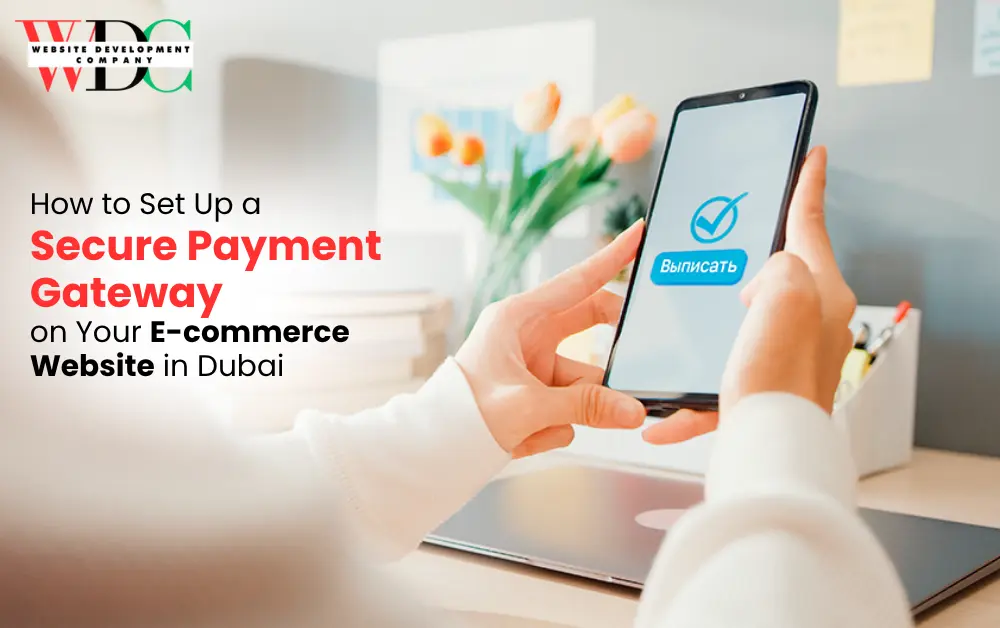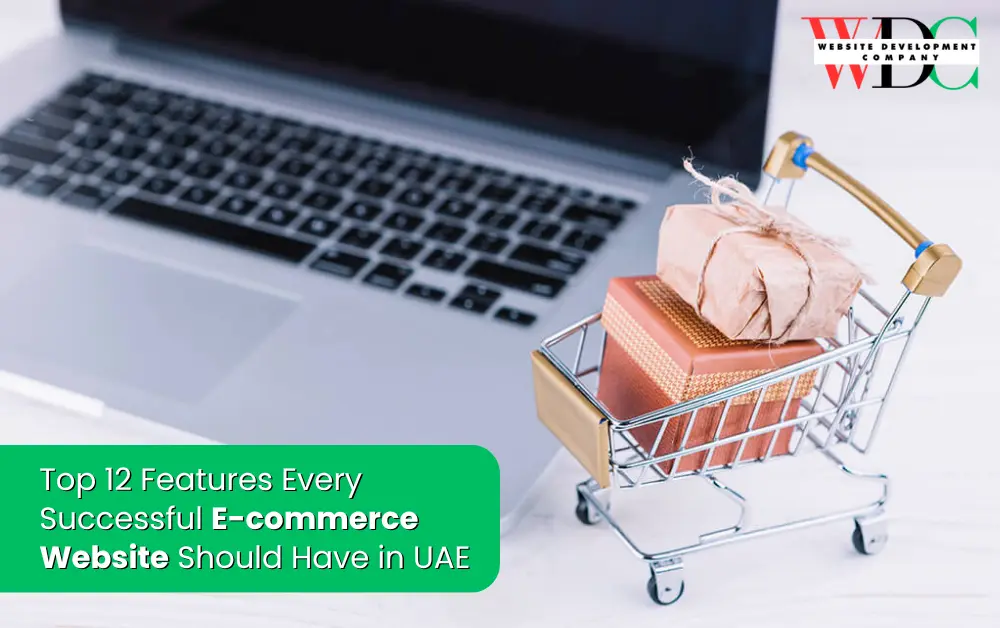As e-commerce continues to grow rapidly in Dubai, building customer trust is more important than ever—especially when it comes to handling online payments. Whether you’re selling fashion, electronics, or digital services, a secure and seamless payment gateway can make or break your conversion rates. The speed, security, and ease of the checkout experience often determine if a buyer completes the purchase or abandons their cart.
If you’re planning a new store or working with a professional in ecommerce web design Dubai, integrating a secure payment gateway should be at the top of your launch checklist. In this blog, we’ll guide you through the essential steps to set up a secure payment gateway on your e-commerce website in Dubai, ensuring both safety and customer satisfaction.
Step 1: Understand What a Payment Gateway Does
A payment gateway is a service that processes online payments securely. It connects your e-commerce website, your customer’s bank or card provider, and your merchant account (where you receive funds). The gateway encrypts sensitive payment data, checks for fraud, and approves or declines transactions in real time.
Benefits of a Secure Gateway:
- Encrypts customer data (credit/debit card, UPI, wallet)
- Protects your business from fraud and chargebacks
- Builds buyer trust and increases conversions
- Supports multiple currencies and payment modes
Step 2: Choose the Right Payment Gateway for Dubai
There are several payment gateways available for e-commerce in Dubai. Your choice depends on your business size, transaction volume, fees, and target audience.
Popular Payment Gateways in Dubai:
- Telr – Supports multiple languages and currencies
- PayTabs – GCC-focused with fraud prevention features
- CC Avenue – Popular for UAE and India-based sellers
- 2Checkout (Verifone) – Suitable for global digital products
- Stripe – Available in UAE; excellent for startups and SaaS
- Checkout.com – Offers local currency and scalable solutions
Things to Compare:
- Set up and monthly fees
- Supported payment methods (Visa, Mastercard, Apple Pay, etc.)
- Settlement times
- Security compliance (PCI DSS Level 1)
- Multi-currency and language support
Step 3: Register a UAE Business License
Before you can set up a payment gateway in Dubai, most providers require your company to be legally registered in the UAE.
Documents You May Need:
- Valid UAE trade license
- Company bank account
- Emirates ID or passport of the business owner
- Website URL and business email
- Terms & Conditions and Refund Policy pages on your website
Some gateways also conduct a background check to ensure your store doesn’t deal in restricted products (e.g., gambling, tobacco, etc.).
Also read:- 8 Crucial Website Security Tips to Protect Your Business Online in Dubai
Step 4: Ensure Your Website Is Ready
Before a payment provider will activate your gateway, they’ll verify that your website is fully functional, professional, and secure.
Must-Have Pages:
- Product or service listings with prices
- About Us and Contact Us pages
- Terms & Conditions
- Refund and Return Policy
- Privacy Policy
- SSL certificate (your website must be HTTPS secured)
If you’re using Shopify, WooCommerce, Magento, or any custom CMS, make sure your website is responsive and mobile-friendly too.
Step 5: Apply for a Merchant Account
Some payment gateways require a merchant account, which is a type of business bank account that lets you accept and process online transactions.
There are two types:
- Aggregated (shared) accounts – quicker to set up (used by Stripe, PayTabs, etc.)
- Dedicated merchant accounts – offer more control, which is often required for larger stores
Your payment gateway provider will guide you on whether you need one or if they include it in their setup.
Step 6: Integrate the Payment Gateway
Once approved, you’ll receive API keys or plugins from your gateway provider to connect the service to your website.
Integration Options:
- Hosted Payment Page: The user is redirected to a secure page to enter payment info. Easy and safe, but less control over design.
- API Integration: Payment happens on your site. This solution offers complete control but requires SSL, PCI compliance, and strong backend security.
- Plugins/Extensions: Platforms like WooCommerce, Magento, and Shopify offer ready-made plugins that make integration simple.
Work with your web developer or in-house team to test the integration before going live.
Step 7: Test the Payment Process
Before accepting real payments, test the checkout process thoroughly. Most payment gateways provide a sandbox (demo) mode for testing.
Check for:
- Smooth flow from cart to payment
- Clear error messages for failed transactions
- Mobile responsiveness
- Email notifications after order completion
- Refund process test (if applicable)
This is crucial to ensure the user has a frictionless and trustworthy buying experience.
Related read:- How to Set Up a Secure Payment Gateway on Your E-commerce Website in Dubai?
Step 8: Display Trust Signals on Your Website
Now that your payment gateway is live, reassure your customers that their data is secure and that they’re shopping with a credible brand.
Add These Trust Elements:
- SSL certificate lock icon in browser
- Payment provider logos (Visa, Mastercard, PayPal, etc.)
- Security badges (e.g., “Secured by Stripe”)
- Customer reviews and testimonials
- Visible customer support contact (live chat or WhatsApp)
Trust signals reduce hesitation and encourage users to complete their transactions confidently.
Step 9: Stay Compliant with Security Standards
Handling financial data comes with responsibility. Your website must follow global security standards to protect user information.
Key Practices:
- Use strong admin passwords and two-factor authentication
- Regularly update your CMS, plugins, and software
- Perform security audits or scans monthly
- Store only essential user data (never save card details unless PCI DSS compliant)
Also, stay updated with UAE e-commerce regulations regarding consumer rights, taxes, and data privacy.
Step 10: Monitor Transactions and Optimize Checkout
After launching, your job isn’t done. Continue tracking transactions and user behavior to find areas of improvement.
What to Monitor:
- Drop-off rates at checkout
- Abandoned cart recovery emails
- Fraud detection and chargeback management
- Preferred payment methods by region
- Conversion rates across devices
Use analytics tools, feedback surveys, and session recordings to keep improving your checkout experience.
Final Thoughts
A secure and seamless payment gateway is at the heart of every successful e-commerce business. It’s what turns interest into income. By following the steps above—from choosing the right provider to testing, integrating, and monitoring—you’ll create a trustworthy buying experience that encourages customers to return.
In Dubai’s fast-growing online market, trust, speed, and convenience are everything. Don’t just build a website—build confidence at every click.
Frequently Asked Questions
-
How long does it take to activate a payment gateway?
It usually takes 3 to 10 business days after submitting all required documents and completing site verification.
-
What happens if a customer’s payment fails?
Most payment gateways automatically show an error message. You can also set up email alerts or offer retry options.
-
Can I switch payment gateways later if needed?
Yes. You can change or add new gateways anytime, but make sure to test integration and inform customers.
-
What’s the difference between a payment gateway & a payment processor?
A gateway securely collects and sends payment data. A processor handles the transaction between banks. Some services offer both.
-
Will the payment gateway work on mobile devices?
Yes. Most modern payment gateways are mobile-optimized and work smoothly across smartphones and tablets.




